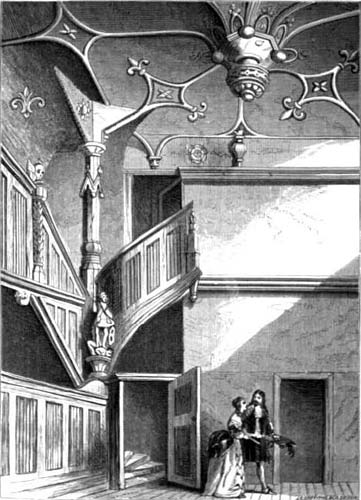
King John's Tavern - 87 South Street
Page added 29 October 2009 - Click pictures to enlarge
The house that was King John's Tavern, was thought to have dated from the reign of Henry VII. Robert Dymond, in his 'Old Inns of Exeter' stated that the King john's Tavern harboured those with Royalist sympathies during the Civil War. There is also evidence that the Globe at Topsham and King John's Tavern were owned by the same proprietor in 1700. In 1745, when Catholics were very much in the background, afraid to worship openly, it was reported that divine service was cautiously celebrated in an upper back room of Mr Flashman's house, which was King John's Tavern, with an occasional visit from an itinerant priest to conduct the service. In 1763, the Jesuits provided a regular priest, the Rev, William Gillibrand who boarded with Mr Truscott, in a house on Exe Island, that became the site of the gas works in the 19th Century, and is now a car park. The room in the tavern remained in use by the Catholics until 1775, when the moved to a chapel at St Nicholas Priory.
The tavern reopens
In May 1815, a notice appeared in the Flying Post in which Mr O MacDonald thanked his friends for their support since he had reopened the tavern, having it 'fitted up' with a number of bedrooms and stabling. He went on to state that 'Navy and Army lists [were] taken in', in other words, they would give a bed to a soldier and sailor. The next month, and a public auction of two dwelling houses was announced, an indication that the tavern was in full trade.
In 1818, the tavern was known as Wood's King John's Tavern, and William Wood was confirmed as the owner in a directory of 1822. Wood ensured there was a healthy run of property auctions at the tavern to keep a healthy number of drinkers and visitors – he also advertised the Bustler Smack, a 96 ton ship of 74 ft length, for sale. Even Head Weir Mill was auctioned in 1823 at the tavern.
A servant at King John's Tavern, Mr James Rendle was committed for trial in 1824, for stealing from a desk belonging to a waiter at the tavern, George Toms, a £5 and six £1 notes of the General Bank, belonging to the waiter. Rendle was captured at Boroughbridge, near Taunton, where the property was found on him, and returned to Exeter for trial. Two years later and James Page, a former waiter at King John's Tavern was found guilty of allowing his wife and three children to become chargeable to the Corporation of the Poor of the City and sentenced to the treadmill – which rather prevented him from supporting his family
The recently rebuilt tavern was taken by Benjamin Cattle in March 1836, and turned into a family and commercial hotel. He also advertised 'A most complete Coffee room is fitted up, at which Soups Steaks, &c. may be had at the shortest notice.' The successful ploy of regular auctions to generate trade continued, with one being an extensive cargo of mahogany and other wood, some as log and some as veneer, in January 1837. In 1838, between several property sales was a sale of valuable standing elm.
Gone for a fag?
Then in April 1839 there was a notice to let for immediate possession. The Lower Market had just been completed, and the rear of the tavern allowed a quick entry to the market, obviously a benefit for trade.
The front of King John's Tavern,
was removed for road widening sometime after 1839, part of the
great improvements made to the city in the 1830s and 40s. Pigots
directory of 1844 shows James Murch, a wine and spirit merchant
occupying the premises, and he was still there in 1850.
It is not until about 25 years after the last mention of the tavern
that the Flying Post again
mentions the tavern, in a nostalgic article about old Exeter. A
conveyance of 1869 confirms that 87 South Street passed to Lloyd's
Tobacco Factory, which had a main entrance to their factory at 76/77
Fore Street. Richard Lloyd was listed as a tobacco and snuff maker in
Fore Street in Pigott's 1844 directory. The factory was destroyed by
enemy action in 1942.
Source: Flying Post, An Account of the Merchant Adventurers,
Memorials of Old Devonshire

The
door way of King John's Tavern. The left hand figure is thought to be a
porter of Sergeant at Mace and the figure on the right, a clown or
domestic fool.

The
decorated stairway from the1873 'An
Account of Exeter's Merchant Adventurers.'
│ Top of Page │